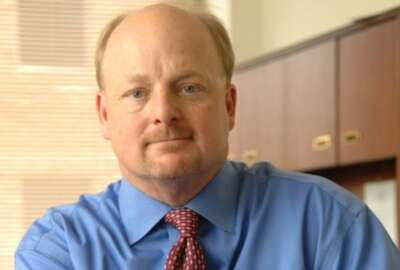Costliest defense program in history faces further problems, delays
A new Government Accountability report finds that the DoD will have to spend $12 billion annually over the next 22 years on the F-35 program. Rob Levinson,...
By Dena Levitz
Federal News Radio
Problems have long plagued the F-35 fighter plane, the Defense Department’s costliest defense program in history.
But now persistent software snafus could delay the program’s expected 2015 rollout. According to a new audit by the Government Accountability Office, the problems are severe enough that the DoD will have to spend upwards of $12 billion annually during the next 22 years on the program.
This F-35 program has been restructured three times so far, which means the latest GAO findings are “not huge but significant,” Rob Levinson, senior defense analyst for Bloomberg Government, said.
“There’s been a series of software problems, there’s been structural programs in the aircraft,” Levinson said, during an interview Wednesday on Federal Drive with Tom Temin and Emily Kopp. “There are a lot of problems that have gone along with this very vast program.”
Overall, the F-35 program’s scope is immense, which is why it’s such an expensive, involved endeavor at $391 billion-plus. The total buy comes to more than 2,000 aircraft, across three services and working with nine key international partners.
Levinson said with any large program — whether it’s governmental or private sector — there’s inherent risk, and delays can arise. In the case of F-35, “with more money and more time, I’m sure (the problems) are fixable,” he added. Time and money, however, are in short supply.
Already, the Navy has cut back 33 aircraft from its original request. There could be pressure from the Air Force to try to reduce its ultimate buy as part of the program, Levinson said.
“I think Congress has had a lot of skepticism of this program, and (the GAO report) will add to that skepticism,” he said. “If you’re looking for money in DoD, there’s a lot of it in F-35.”
What likely won’t change, however, is overall management of the program away from Lockheed Martin and its subcontractors, Levinson said. Strides have been made in terms of manufacturing of the aircraft.
“I don’t know that people want to change too many horses in midstream here,” Levinson said “And I also would agree with that statement of ‘too big to fail.’ This program is not going to get killed. There are simply too many countries, too many services and it’s too far along.”
RELATED LINKS:
Senators seek cost cuts for F-35 fighter jet
F-35 cost estimates increase in defense acquisition cost report
Copyright © 2025 Federal News Network. All rights reserved. This website is not intended for users located within the European Economic Area.





